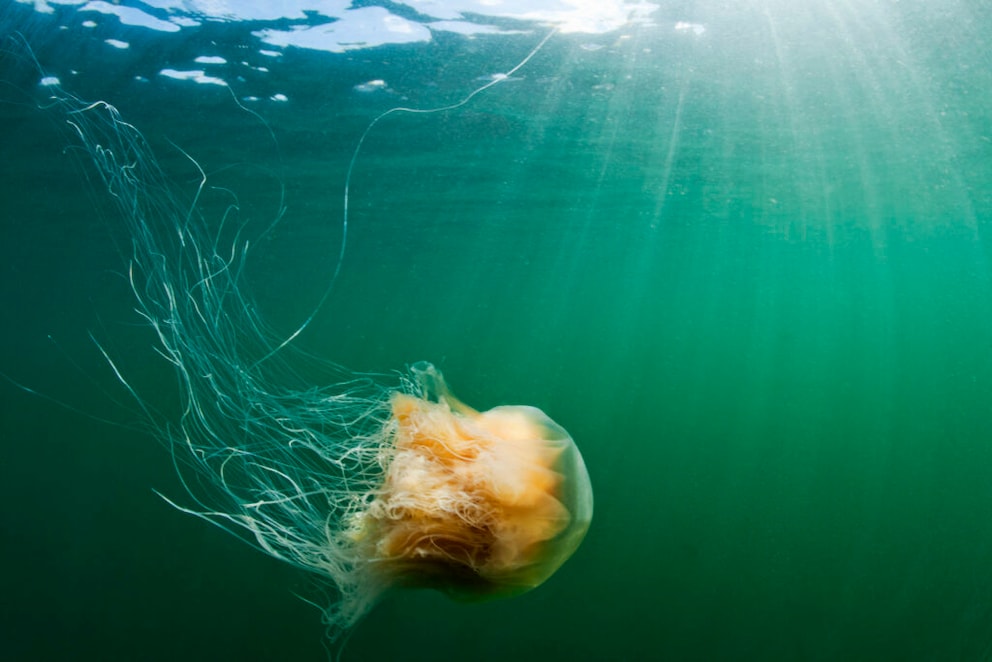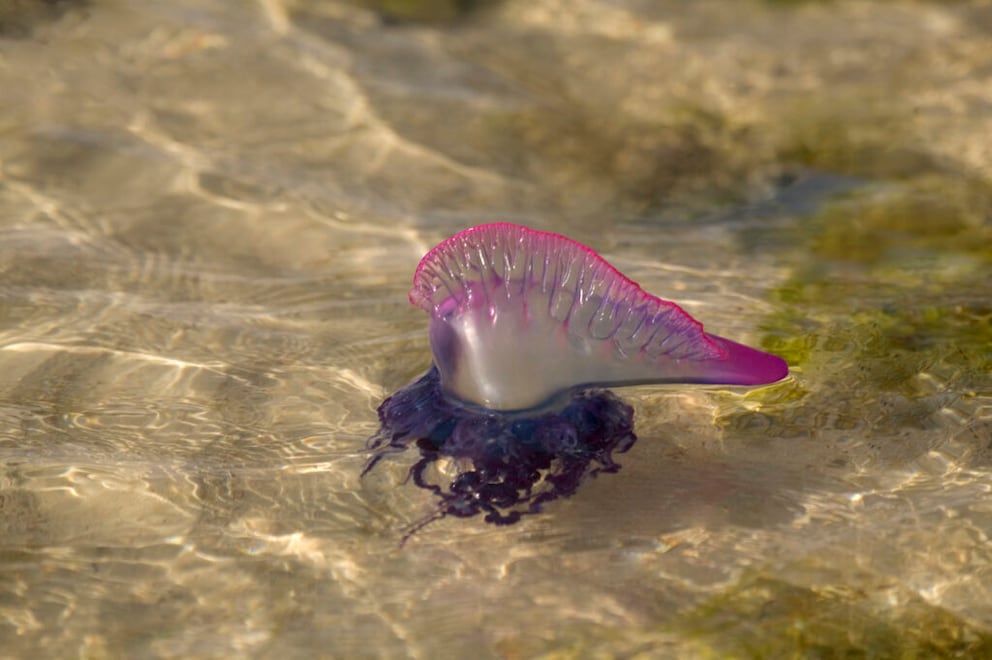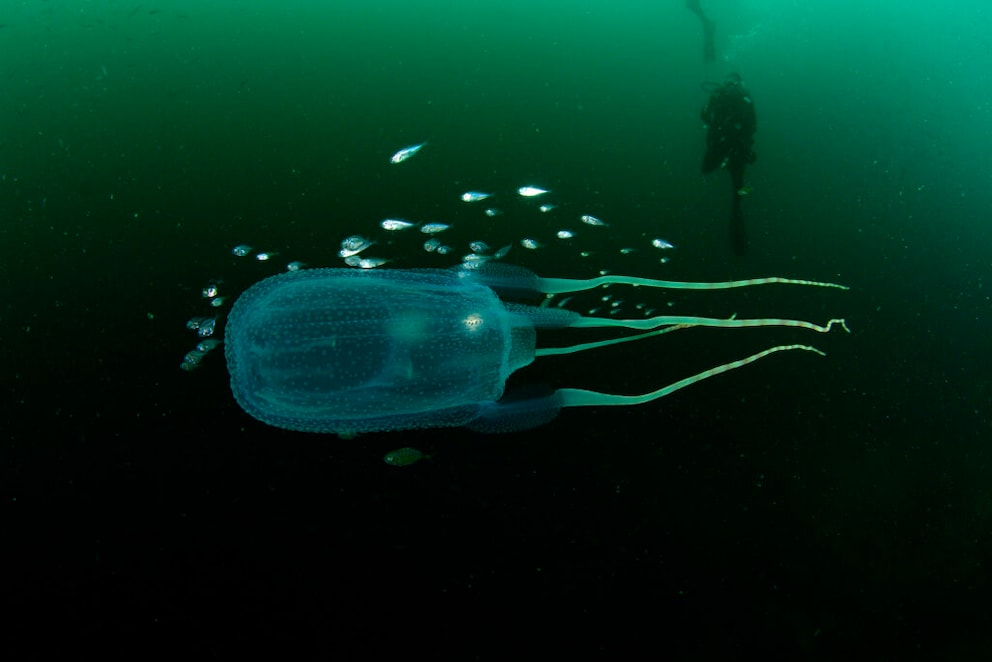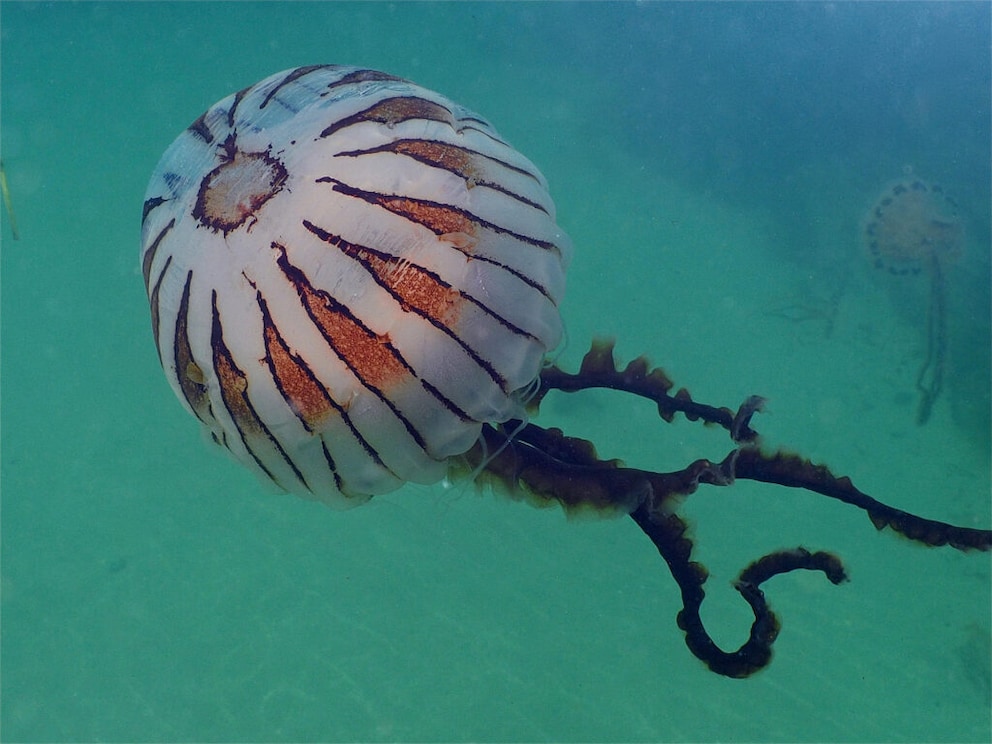October 24, 2023, 3:04 pm | Read time: 6 minutes
Jellyfish aren’t exactly people’s favorite animals, especially not when they’re on vacation. When traveling around the Mediterranean, you might encounter species you’ve never seen before. PETBOOK introduces the most common types.
They seem like they’re from another planet and are visually both fascinating and alien to us: jellyfish. These marine creatures are among the oldest animal species and are found in all seas and oceans. In the Mediterranean, too, there is an increasing variety of cnidarians due to the warming of the seas. Most species are harmless, but some can be dangerous to humans. PETBOOK investigates how to identify dangerous jellyfish and what to do if stung.
Worldwide, there are well over 2,500 species of cnidarians, which are 98 percent water and also known as medusae. They may not have a brain, but they do have a nervous system and sensory organs that make them skilled hunters. They shoot venom from their tentacles at their prey, and in some species, this venom can be dangerous to humans. As a result, some vacationers have experienced entire beach sections being temporarily closed in Mediterranean countries such as Croatia, Italy, Portugal, Greece, or France. But which jellyfish species should we be wary of?
Overview
- Which Jellyfish in the Mediterranean Are Dangerous?
- Mauve Stinger (Pelagia noctiluca)
- Lion’s Mane Jellyfish (Cyanea capillata)
- Portuguese Man o’ War (Physalia physalis)
- Box Jellyfish (Chironex fleckeri)
- Compass Jellyfish (Chrysaora hysoscella)
- What to Do if Touched by a Poisonous Jellyfish?
- How to Prepare for a Jellyfish Encounter on Vacation?
- Sources
Which Jellyfish in the Mediterranean Are Dangerous?
When swimming in the sea, the first rule to follow is: Please do not touch any marine creatures! The animals will try to defend themselves, which can be quite unpleasant. Jellyfish typically sting in such cases. PETBOOK explains which species are dangerous to humans and how to recognize them.
Mauve Stinger (Pelagia noctiluca)

It glows beautifully pink and purple in the dark, but contact with it can be painful. This jellyfish, also known as the fire jellyfish, usually appears in swarms, and its migrating populations can stretch for kilometers. Its bell has a diameter of only 10–12 cm. Generally, it is a small jellyfish species, but it has very long tentacles that can grow up to a meter long. These tentacles cause extremely painful stings, leading to blisters and severe itching on the skin. Allergy sufferers react with headaches, nausea, and vomiting. In the Mediterranean, especially in Greece, there are increasing reports of mass occurrences.
Lion’s Mane Jellyfish (Cyanea capillata)

Coastal residents colloquially refer to it as the fire jellyfish or lion’s mane jellyfish, and it belongs to the jellyfish family. Its many yellow stingers give it an appearance reminiscent of a lion’s mane. The diameter of its bell can reach up to a meter and appears yellow to dark red. Its 70 to 150 marginal tentacles can grow up to 30 meters long! Contact with its fine tentacle threads causes the skin to burn and swell, resembling a burn. This large jellyfish can also be found in the North or Baltic Seas.
Portuguese Man o’ War (Physalia physalis)

Strictly speaking, it is not a jellyfish but a siphonophore. However, because it is extremely poisonous, we want to warn against an encounter. It resembles a jellyfish externally but is composed of a multitude of polyps. The center is a 30 cm gas bladder with a comb-like sail. This transparent, bluish organism floats on the water surface and has been spotted off the coasts of Mallorca and Formentera. Its many blue-violet and white tentacles can grow up to 50 meters long. These tentacles contain the poisonous stingers, whose touch is reminiscent of whip lashes. A healthy adult can survive the “burns,” but for allergy sufferers or weakened individuals, it can rarely be fatal (usually with a cardiovascular shock). Doctors recommend removing the stinging cells or detached tentacles and not washing the stings with vinegar or freshwater. Better is hot water over 45 degrees and subsequent treatment with zinc gluconate.
Box Jellyfish (Chironex fleckeri)

It is one of the most poisonous marine creatures, and its stings are deadly, but fortunately, it is very rare in the Mediterranean region. The home of the box jellyfish is the Australian waters. With a bell diameter of about 30 cm (usually only 14 cm) and tentacles about 60 to 3 meters long, it appears almost inconspicuous at first glance. However, it can see excellently with its 24 eyes. Most accidents with it occur in shallow water when people swim into the almost invisible tentacles. The pain from a touch is comparable to a burn from an iron. Death can occur five to twenty minutes after the sting. Quick action with the antidote, which must be injected intravenously, is necessary for the victim to survive.
Compass Jellyfish (Chrysaora hysoscella)

This jellyfish, with a bell diameter of up to 35 cm, is easily recognizable by its yellow-brown, orange, red, and brown bands. It is also easily identifiable by the flat bell, which is symmetrically patterned in yellowish white, brown, and orange. Its tentacles can grow up to 1.5 meters long. The stinging venom causes skin irritations in humans, and allergy sufferers sometimes experience circulatory problems. Although this jellyfish is not very poisonous, the burning skin irritations it causes can last for days.
Also interesting: The 13 Deadliest Animals in the World
What to Do if Touched by a Poisonous Jellyfish?
The unpleasant and painful aspect of jellyfish is the stinging cells in their tentacles. They cause skin redness, irritation, and itching upon contact. Sensitive people or allergy sufferers also react with nausea, vomiting, and headaches. After contact, you should proceed as follows:
- Leave the water immediately
- Rub the “burned” area with sand and rinse with seawater
- Remove tentacle remnants. Avoid the wound, as this can spread the venom further
- See a doctor in case of an allergic reaction
- Apply cold compresses for relief
- Take painkillers if the pain is very severe
- Blow-dry
Generally, the wound heals in one to two days.
How to Prepare for a Jellyfish Encounter on Vacation?
- Inform yourself in advance about jellyfish occurrences in your vacation region
- Wear swimming goggles
- Warn children not to touch unknown animals

The most dangerous animals in Europe

The Most Poisonous Animals in the World

These Eerie Fish Have a Second Jaw
Sources
- Marlin.ac.ak, “Mauve stinger (Pelagia noctiluca)” (accessed on 10/23/2023)
- Zoovienna.at, “Lion’s Mane Jellyfish (Cyanea capillata)” (accessed on 10/23/2023)
- Lobosonda.com, “Portuguese Man o’ War (Physalia physalis)” (accessed on 10/23/2023)
- Planet-wissen.de, “Poisonous Box Jellyfish” (accessed on 10/23/2023)
- Schutzstation-wattenmeer.de, “The Compass Jellyfish” (accessed on 10/23/2023)

